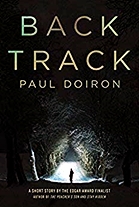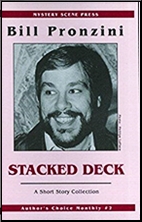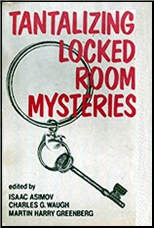Tue 19 Nov 2019
Pulp SF Stories I’m Reading: PHILIP K. DICK “The Gun.”
Posted by Steve under Pulp Fiction , Science Fiction & Fantasy , Stories I'm Reading[4] Comments
PHILIP K. DICK “The Gun.” Short story. First published in Planet Stories, September 1952. First collected in Beyond Lies the Wub (Underwood Miller, hardcover, 1987; volume one of The Collected Stories of Philip K. Dick, sold only as a five-volume set.) Also collected in The King of the Elves (Subterranean Press, hardcover, 2011), among others.
This appears to have been Philip K. Dick’s second published SF story, not including some he had published in a college newspaper. The first also appeared in Planet Stories, that being “Beyond Lies the Wub” in the July 1952 issue. “The Gun†is a minor story, admittedly, a fact reflected by noting that all of its later reprint appearances gave been in collections of his early work and never picked up for a major anthology of any import.
In 1952 the quality of the stories in Planet Stories was beginning to pick up. Authors like Ray Bradbury and Leigh Brackett had been appearing all through the 40s, but authors such as Poul Anderson, Gordon R. Dickson and Eric Frank Russell were beginning to be added to the mix. (Anderson, for example, had a story in this same issue; see below. Also among his early work, but still a sign of significant improvement.)
It is not clear whether the devastated planet is Earth or the crew of the spaceship that comes to investigate is from Earth (my sense was it was the latter), but an atomic war had left the planet covered with bare earth or uninhabitable slag. And yet the investigating ship is shot down without warning, from a gun they could not see.
A veteran SF reader will know right away that the gun is acting on it own, a remnant of two sides fighting each other to the bitter end. They manage to disable to gun so they can safely take off, but a twist in the end suggests that they have made a serious error.
What adds a bit of poignancy to the story is the discovery of a hidden horde of material hidden away for safekeeping by one of the two warring sides about their culture. It is this single factor that makes this short take stand out, if only in a small way, hinting that the author may have had a future ahead of him. Which of course he did.
Other stories in this issue (thanks to ISFDb) —
4 • Evil Out of Onzar • novella by Mark Ganes
30 • Zero Data • novelette by Charles Saphro
46 • The Gun • short story by Philip K. Dick
54 • The Star Plunderer • [Technic History] • novelette by Poul Anderson
70 • Thompson’s Cat • short story by Robert Moore Williams
78 • Big Pill • short story by Raymond Z. Gallun
90 • The Slaves of Venus • novelette by James E. Gunn [as by Edwin James]


